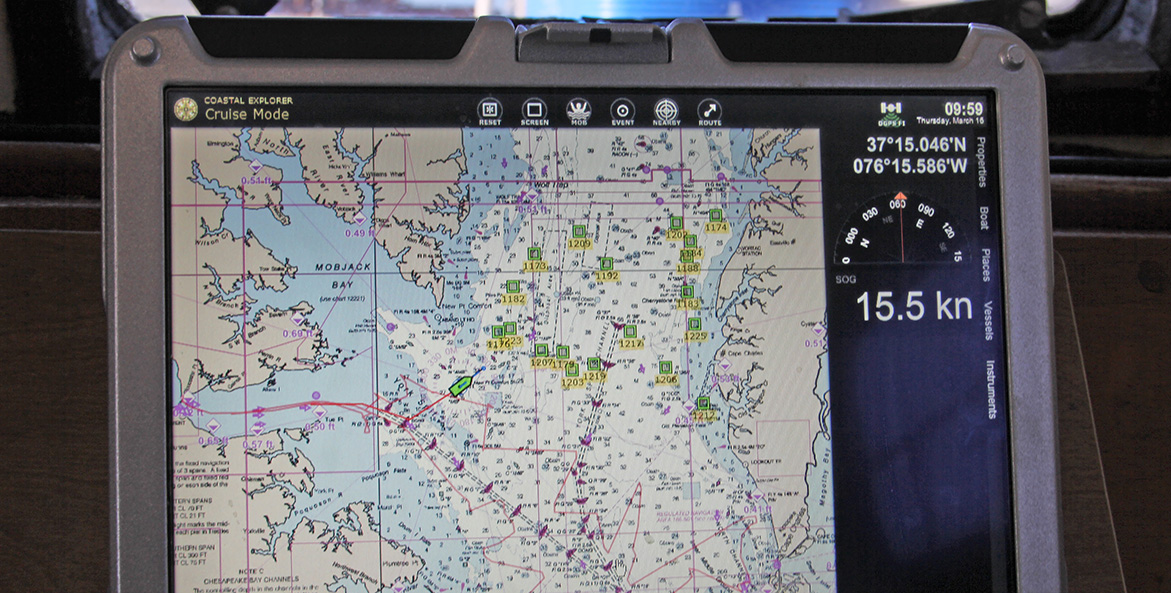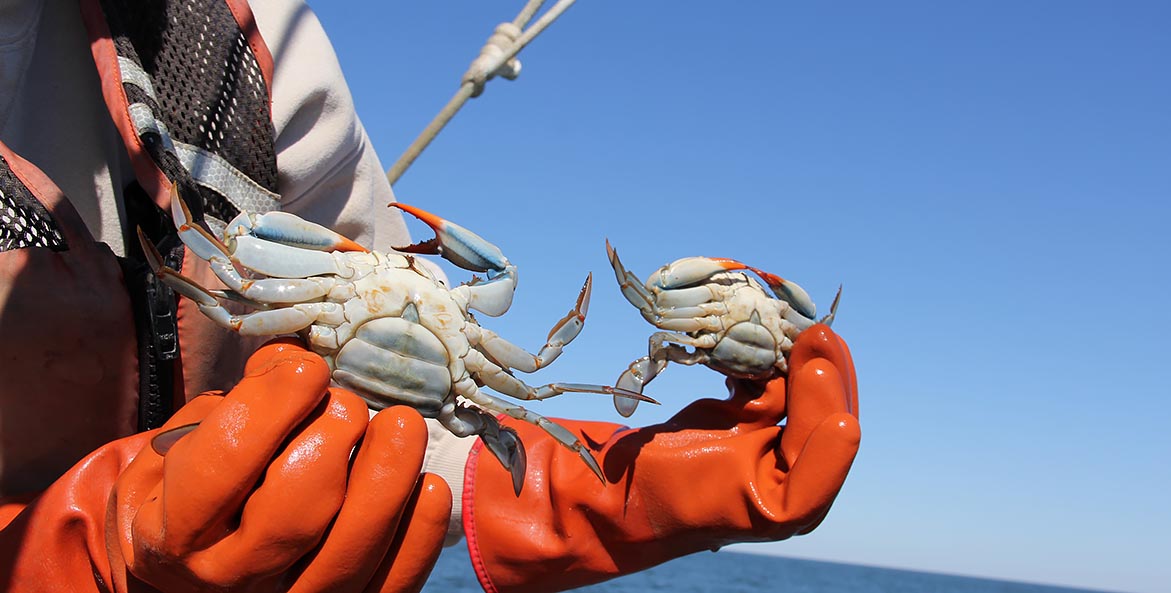The season for catching Chesapeake Bay blue crabs is already underway in Virginia, and recreational crabbing will officially kick off in Maryland on April 1. Several boats have been plying the waters the past several months, however, to pursue the crustaceans not for steaming but for science.
The annual winter dredge survey, conducted each year by the Maryland Department of Natural Resources and the Virginia Institute of Marine Science from December through March, estimates how many crabs are overwintering in the Bay’s muddy bottom. It’s a key indicator of the size and health of the population that scientists and fishery managers use to set catch limits and other regulations.

On March 16, VIMS researchers sampled crabs at 18 locations in the Lower Bay, marked by green squares on this electronic navigational chart.
Kenny Fletcher/CBF Staff
This year’s survey results, which won’t be released for another couple months, are anxiously awaited. Last year, the survey showed the overall crab population dropped for the third consecutive year to its lowest level in the survey’s 33-year history. It also showed a continuing low number of juvenile crabs.
“Although juvenile population estimates can vary greatly from year to year, the 2022 results are the third year of below-average numbers in this segment of the population,” Chris Moore, CBF’s Senior Regional Ecosystem Scientist, said at the time. “These reduced abundances highlight the need to continue to protect adult females in order to help ensure better numbers in the future.”
The focus on protecting females is due to their importance to the overall resilience of the population, said Rom Lipcius, a professor of Fisheries Science at the Virginia Institute of Marine Science, and head of the lab that conducts the annual dredge survey in Virginia. Each adult female is capable of producing several broods of young crabs every year. So far, the number of female crabs has remained above the threshold of concern set by fishery managers.

A researcher holds two female crabs, identifiable by their U-shaped apron, caught during the winter dredge survey.
Kenny Fletcher/CBF Staff
“As long as those remain at a good level, the population as a whole can then recover,” Lipcius said.
In the meantime, scientists are still working to get a better handle on what’s going on with juvenile crabs. Some of the fluctuations could be due to an abundance of invasive predators, like blue catfish. It could also have something to do with the life cycle of blue crabs, which require higher salinities when they are juveniles. In the Chesapeake Bay, that means females migrate to the mouth of the Bay to spawn. The larval blue crabs are swept into offshore ocean waters, where they develop for about a month before returning to the Bay.
“We don’t have a solid handle on what all the different driving forces are offshore that affect survival of those recruits,” Lipcius said.
Climate change further complicates the crab equation, he said. That applies both offshore, where changing currents and environmental conditions could affect larvae, as well as in the Bay itself. Some changes, like warming waters, may eventually make it possible for females to have more broods each year. It could also change growth rates for crabs, the likelihood of deadly freezes, as well as the availability of food sources and habitat.
“There are various elements that make it very difficult to predict what, in particular, global warming is going to do to crabs at the population level,” Lipcius said.
Ultimately, continued scientific monitoring—like the dredge survey—is critical to help researchers keep tabs on blue crabs and make management changes as necessary. Over the next two years, scientists will also be working to update a benchmark stock assessment, providing new insight into this notoriously fickle fishery.



